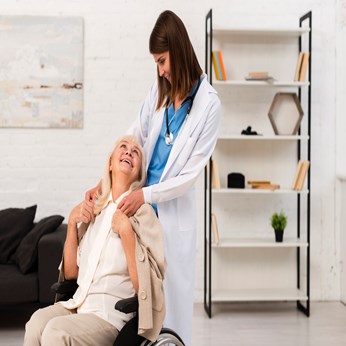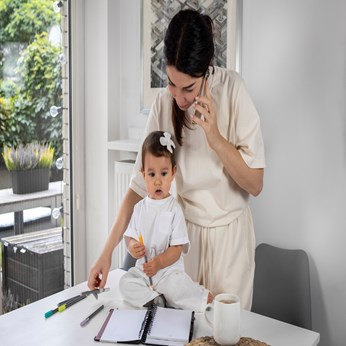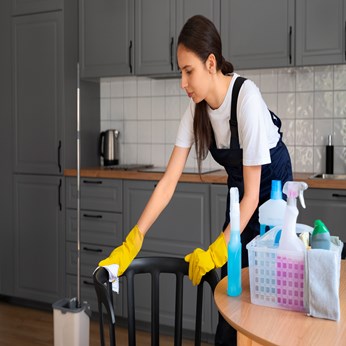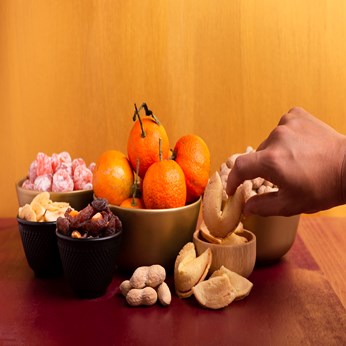How To Make An Elder’s Home Parkinson Proof

Parkinson disease or PD is a progressive neurological disease that affects both movement and cognition by destroying the nerve cells in the basal ganglia part of the brain. The first signs that one would notice is a sense of weakness, difficulty in walking, tremor of head and hands and stiff muscles. Following certain tips may make for independent and successful functioning in the house.
Tips to make an elder’s home Parkinson proof:
• As a general safety guideline it is best to keep emergency numbers like police, fire, poison control and the neighbor’s telephone number handy. It would also help to write the numbers on a sticker and put them on all phone receivers. Changing the buttons of the phone to larger push buttons and having frequently called numbers entered into the speed dial would help. The elder should preferably have one phone accessible preferably in the pocket to be used if he falls down.
• Next make sure you protect your elder from all smoke hazards; this could be done by making sure the smoke detectors work properly and the elder avoids the use of space heaters and electric blankets.
• Making your home Parkinson proof for elders means placing the furniture with wide spaces between them; this would ensure the elder has a lot of space to move around. It is also significant to understand that it is best to arrange furniture in such a way that there are outlets available for lamps and appliances without the need for extension cords. Even if extension cords are used it is best to make sure that they are taped and out of the way of the elder, who may trip and fall. It would be ideal to install handrails along walls, hallways, and stairwells to provide support to your near and dear elder for support.
• It would be best to invest in touchable lamps or those that react to sound.
• It would help to use straight backed chairs with firm seats and cushions to assist getting up, sitting down and make it easier to move.
• If the elder finds it difficult getting into and out of bed, it would be ideal to insist that they use a reclining chair to sleep. It would help having a stationary pole or trapeze bar installed that would assist getting out of bed.
• Make sure the toilet of the elder has an elevated toilet seat and/or safety rails to assist standing from a low surface. Also make sure there are extended lever handles on faucet to make it easier to turn.
• Ensure you install grab bars inside and outside the bathtub or shower and advice the elder to use bathroom transfer bench or a shower chair with back support.
• Next ensure you have non-skid mats or decals in the bath tub; install large rugs or non-stick backing or wall to wall carpeting to cover the bathroom floor and avoid small bathroom mats.
• Last, but most importantly an occupational therapist or rehabilitation specialist may recommend a variety of assistive devices like built-in utensils, grab bars, devices to help reach out, electric beds or mattresses, sliding boards and wheel chairs that would make home care and daily activities more comfortable.
Image Courtesy: Google
Take the next step toward your goals
Share your requirement and find the best care providers in your area
-
Looking for a caretaker’s job? Build your profile and get in touch with families in your vicinity.
-
Discover nannies, babysitters, cooks, housekeepers, pet sitters, and elder care under one roof.
-
Get all the support you need to run a successful care center.
-
Search for appropriate centers near you depending on your needs.
Care Corner Insights: Blog Library

Baby Sleep Problems: What is Sleep Regression and How to Handle It
If you’re a parent, you know that baby sleep is one of the greatest mysteries of life. One day your little one is snoozing like an angel, and the next day they’re suddenly waking up every hour, fussing, or refusing to nap. Before you panic, there’s a

What is Validation Therapy? A New Approach to Dementia Care
Caring for loved ones with dementia is one of the most emotionally challenging journeys a family can face. Traditional methods often focus on correcting memory lapses or redirecting confused thoughts—but that can sometimes lead to frustration, stress

What is a Part-Time Nanny and Do You Need One
Parenting is a beautiful journey, but let’s be honest—it can also be exhausting! Between work deadlines, household chores, and family responsibilities, sometimes there just aren’t enough hours in a day. That’s where part-time nannies step in, offerin

Part-Time Housekeeper Hiring in Alpharetta, GA: Weekly Schedules, Pricing, and Must-Do Tasks
Keeping a home spotless while balancing work, family, and personal commitments can be overwhelming. For families and professionals in Alpharetta, GA, hiring a part-time housekeeper is one of the most practical solutions. Whether you need help once a

Affordable Daycares in Irving, TX with Indian Menu Options: Parent Reviews & Enrollment Tips
Finding the right daycare for your little one is never an easy decision—especially if you’re looking for one that fits your budget and offers familiar food options like an Indian-inspired menu. For parents in Irving, TX, the good news is that several

Can Babies Sleep on Their Side? Tips for Safe Baby Sleep
When it comes to newborns, every parent worries about the smallest details—how they sleep, what they wear, even which way they turn their tiny heads. One common question that pops up is: “Can babies sleep on their side?” The short answer? Not recom

8 Benefits of Hiring a House Cleaner for Your Home
Let’s be honest — keeping a home sparkling clean while juggling work, family, and daily life can feel like a full-time job in itself. That’s where professional house cleaners step in, turning the chaos into calm. If you’ve been debating whether to br

How to Care for a Gassy Baby? What’s Normal and what’s not – Expert Advice
If you’re a new parent navigating the world of burps, bubbles, and baby fussiness—welcome to the club! Gas in babies is incredibly common, especially in the first few months. But how do you know what’s normal and when it’s time to call in expert help

Foods to Lower Blood Pressure for Elderly: What to Eat and What to Avoid
High blood pressure, or hypertension, affects nearly 60% of seniors in the U.S., making it one of the most common age-related health concerns. The good news? Diet plays a powerful role in managing it. With the right foods—and the right elder care sup

When do newborns start smiling? All about this lovely baby milestone
There's perhaps no moment more magical in early parenthood